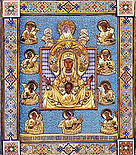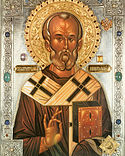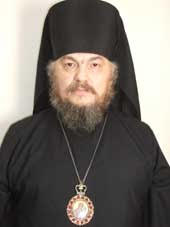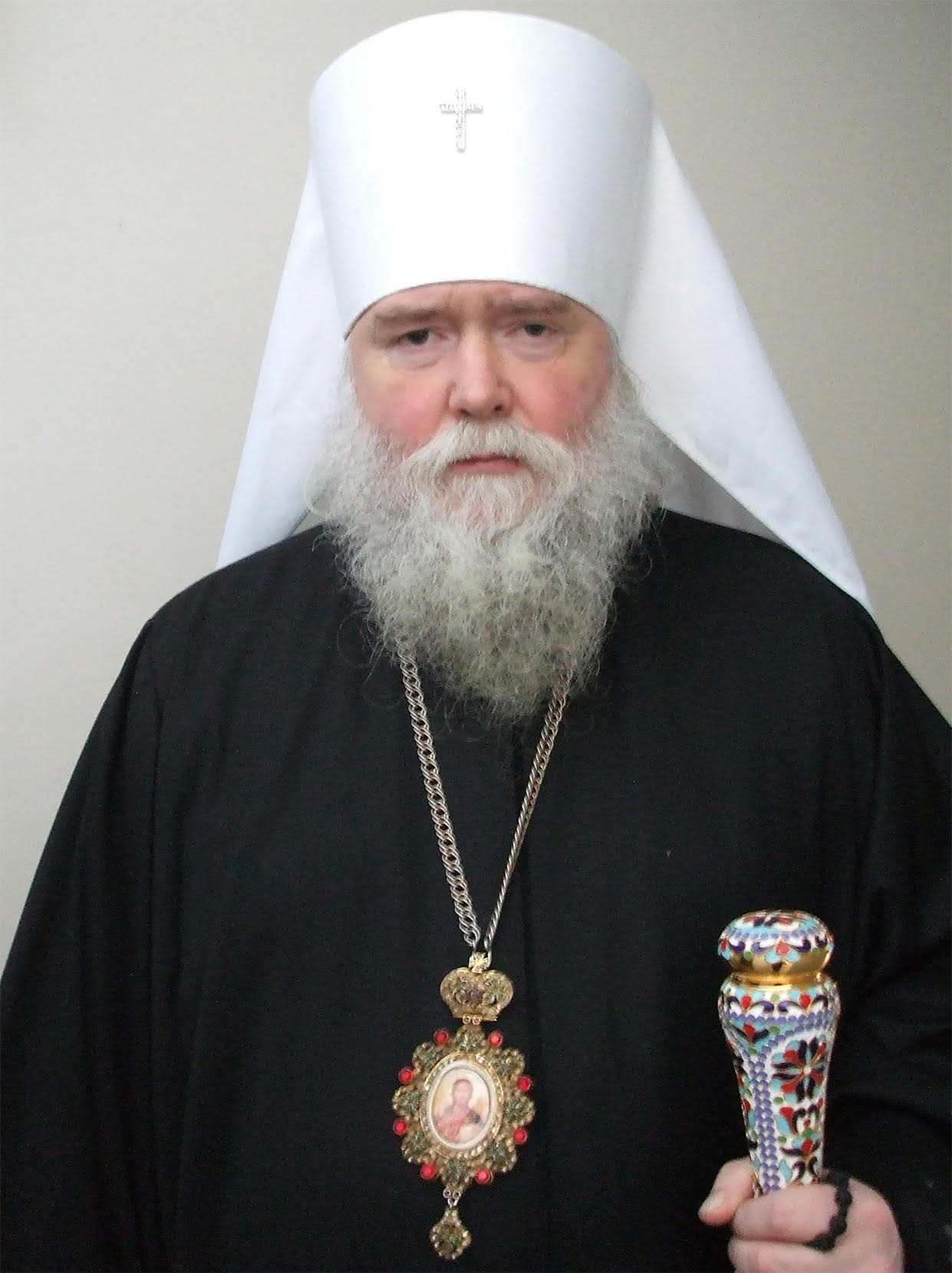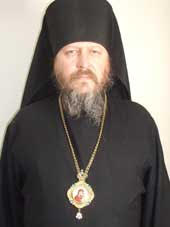“The 10th Anniversary of a Fraud”, an article by Hegumen Ignatiy (Krutkov)
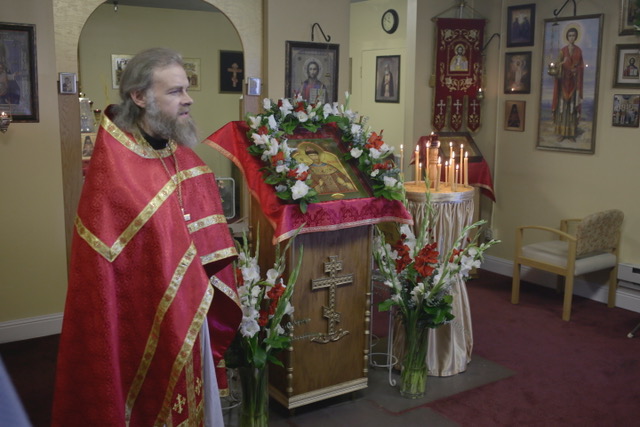
The year 2018 marks the 10th anniversary of the commission of a canonical and dogmatic crime against the Russian Orthodox Church by members of the Odessa Synod headed by Met. Agafangel (Pashkovskiy).
In point of fact, the acceptance in their existing episcopal rank of “Bishop” Afanasiy (Savitskiy) and “Bishop” Ioann (Zaitsev), representatives of the “Sekach” episcopacy that is self-ordained and does not have any conciliar recognition or apostolic succession, is for all intents a violation of the dogma on the Holy Catholic and Apostolic Church.
Referring to the above-mentioned individuals as bishops of the Russian Catacomb Church (even before their hierotesia were performed and they were accepted into the Odessa Synod) is nothing more than a fraud and a grave offense to true representatives of the Russian Catacomb Church, who did not recognize the “Sekachevtsy,” such as Schema-bishop Petr (Ladygin), Hieromonk Aleksandr (Orlov), Father Mikhail Rozhdestvenskiy and others, whose spiritual children continue to be nourished in our ROCA parishes in Russia.
To clearly see how this fraud was committed, we must revisit the events of a decade ago.
May 2007 … The spiritual capitulation before the unrepentant Moscow Patriarchia of almost the entire episcopate and most of the clergy of the ROCOR, under the omophor of Met. Lavr (Shkurla) – the sadly infamous union, which passed as a consuming fire through the hearts of the ROCOR faithful and divided many families. At that time, Bp. Agafangel (Pashkovskiy) raised his voice and at his initiative the Provisional Supreme Ecclesiastical Authority (PSEA) was established. Within a month of the signing of the union, the PSEA appealed to all the faithful of the Russian Church Abroad (06-28/07-11-2007, Church of the Holy Trinity, Astoria, NY):
“We affirm that our administration of the church will be in complete continuity with the rules and ALL DECREES OF THE ROCOR COUNCILS (author’s emphasis added) from the establishment of ROCOR to May 4/17, 2007.”
This strong statement attracted many clergymen and ROCA faithful to place their trust in the PSEA as a step towards resolving this church crisis. But before even a year had passed, new personalities appeared — “Bishop” Ioann and “Bishop” Afanasiy.
Excerpt of the minutes of the PSEA meetings of 13-15 May 2008, Richmond Hill, NY, U.S.:
“RESOLVED:
Request that the hierarchs under discussion (Ioann and Afanasiy – author’s addenda) provide additional clarification and evidence relating to their faith confession and their canonical position.
Request that the PSEA Liturgical-Canons Committee study the submitted documents.
Invite these individuals for discussions at the next meeting of the PSEA.”
Excerpt of the minutes of the subsequent PSEA meeting on 20 August/02 September 2008, Odessa, St. Archangel Michael Diocesan House:
“WE ADHERE TO THE POSITIONS OF THE ROCOR COUNCILS AND SYNODS (author’s emphasis added) but will utilize the most gentle attitude towards those who seek a dialogue with us.
… With the blessing of the PSEA, a meeting was held between the bishops of the Russian Catacomb Orthodox Church and Bp. Sofroniy. The Right Reverend reported on the results of this meeting and their agreement to attend the meeting of the PSEA.”
On the next day, 21 August/03 September 2008:
“WE HEARD: The bishops of the Russian Catacomb Church, Ioann and Afanasiy, Father Aleksandr, and Abbess Serafima, appeared before the meeting. They described to the attendees their ecclesiology, presented documents and expressed their desire to join the ROCA with the rights of autonomy.
Bp. Agafangel: We must comply with the earlier conciliar decisions of the ROCOR regarding this element of the catacomb church. There was a decision to accept them into communion through HIEROTESIA (author’s emphasis added). We must compose an act of union, discuss it, and having reached mutual agreement, adopt it.
After discussion by the PSEA, a draft act of union was prepared and provided to Bishops Ioann and Afanasiy for their consideration.”
Excerpt from the minutes of the 3rd and final day of meetings, 22 August/04 September 2008:
“RESOLVED: To confirm the Act of Union of the bishops of the Catacomb Orthodox Church with the ROCA.
WE HEARD: Bp. Sofroniy read into the record the biographies of the catacomb bishops.
RESOLVED: After consideration of the PROVIDED DOCUMENTS (author’s emphasis added) and of the interviews, to take into the fold of the ROCA, Archbishop Ioann Zaitsev with the rank of bishop and Bishop Afanasiy Savitskiy with their flock, having previously performed the rite of hierotesia over them, with the titles of Bp. Ioann of Buinsk and Volzhskiy…; Bp. Afanasiy of Vologda and Velikiy Ustyug, and defining the boundaries of the diocese under their administration as the Vologda oblast.”
So, in order, Bp. Agafangel at the PSEA meeting declared:
“WE MUST COMPLY WITH THE EARLIER CONCILIAR DECISIONS (author’s emphasis added) of the ROCOR regarding this element of the catacomb church” – and here, in the second part of the sentence, Bp. Agafangel distorts the essence of this ROCOR Council decision on the “Sekachevtsy” – “there was a decision to accept them into communion through HIEROTESIA (author’s emphasis added).”
What ROCOR Council decision is being referenced here? Specifically, this one:
“Decision of 2/15 August 1990 (No. 4/77/135):
“The Synod of Bishops of the Russian Orthodox Church Outside of Russia, which has its legitimate representative in Russia in the person of His Grace Lazar, Bishop of Tambov and Morshansk, regretfully concludes that IT IS IMPOSSIBLE (author’s emphasis added) due to the absence of (or their failure to present) required evidence, TO RECOGNIZE THE VALIDITY OF THE APOSTOLIC SUCCESSION (author’s emphasis added) and the canonicity of the ordinations of these underground hierarchies.”
The “Sekachevtsy” subsequently accused Bp. Lazar of slandering them in pursuit of his own interests. But, as can be seen in the text of the Synod decision of 2/15 August 1990, Bp. Lazar only placed this question on the Council’s agenda and, apparently, presented it fairly, as the “Sekachevtsy” did not attempt to provide adequate evidence at the time.
But maybe they provided this evidence later, in 2008? Indeed, the PSEA minutes, as indicated above, state that documents were submitted for consideration by the committee … But in fact, this never happened! Here is what Bp. Georgiy, the secretary of the Odessa Synod, wrote in his “report on the acceptance of bishops of the Orthodox Russian Catacomb Church (Sekachevtsy)” into the fold of the ROCA:
“Bishop Serafim (Pozdeyev) single-handedly ordained Bishop Gennadiy (Sekach) because there was simply no second catacomb bishop. While imprisoned in Tbilisi sometime in the period 1974-75, Bishop Gennadiy met with the Georgian Metropolitan Malkhas and other bishops who had been allowed at Easter to celebrate the Liturgy in a separate room. All of the bishops decided that Bishop Gennadiy should be elevated to the rank of Metropolitan. Upon his release from prison even those close to him did not believe his elevation to Metropolitan, thinking that Metropolitan Gennadiy told this story for the sake of personal glorification. At one point, immediately after Holy Communion, the bishop said: “Here, I have just partaken of the Body and Blood of Christ, I am standing with a cross before the altar, and can it be that you do not believe me? How could I be lying in such circumstances?” He explained that it was not possible to invite witnesses nor was it possible to provide documentation confirming his consecration. It was equally impossible to provide documentation proving whether or not Serafim Pozdeyev was a bishop, given the severe persecution and church devastation that existed at the time – it was simply impossible.”
That is, the “Sekachevtsy” provided no evidence of their apostolic succession in 2008, just as they provided nothing in 1990, except, of course, for this version of events that was related by Bp. Georgiy. We can each judge for ourselves the degree of naivete, to put it mildly, that is required to believe this version: during the period when the KGB was organizing raids to eliminate catacomb parishes and was sending its agents to penetrate and identify these communities, they permitted a group to perform a Liturgy and the consecration of a Metropolitan in prison, after which this “Metropolitan” was released…
Next, I draw your attention to an important detail: Bp. Agafangel insists that, according to the ROCOR Council resolution, the “Sekachevtsy” should be accepted through hierotesia, i.e. the laying on of hands. He is seconded in this assertion by Bp. Georgiy in the above-cited report:
“It is also important that the Synod of Bishops in 1990, did not recognize the HIEROTONIA of the catacomb clergy, and proposed to perform the rite of HIEROTESIA (author’s emphasis added) on them. But at the time they refused this offer because of their tense relationship with Bp. Lazar. Now they have agreed to this. In this fashion, by accepting the “Sekachevtsy” in 2008 through hierotesia, we are just fulfilling the decision of the 1990 Synod on their status in our Church.”
This replacement of the word HIEROTONIA in the ROCOR Council decision of 2/15 August 1990 with the word HIEROTESIA, constitutes the real fraud perpetrated by Bp. Agafangel and Bp. Georgiy. Of course, for many ROCA parishioners these tricky Greek words mean little. It appears that this was the calculation made in Odessa… Judge for yourself, here is the text of the 1990 decision on the “Sekachevtsy”:
“The Synod of Bishops of the Russian Orthodox Church Outside of Russia has determined that clerics (priests and deacons) of the above indicated ORDINATION (author’s emphasis added), who wish to enter into eucharistic communion with the Russian Orthodox Church Outside of Russia and the Free Russian Orthodox Church, must reconcile their canonical status through ORDINATION (author’s emphasis added ) (if there are no canonical obstacles to this act) from the hands of a bishop recognized by the Russian Orthodox Church Outside of Russia.”
From the above quotation it is clear that the word ORDINATION, as it is generally accepted, refers specifically to HIEROTONIA, i.e. in Russian translation to the ORDINATION of the “Sekachevtsy,” as they do not possess apostolic succession. After all, priests and deacons are not ordained through hierotesia but only through hierotonia.
This was exactly how Bp. Lazar (Zhurbenko) proceeded, in full agreement with the decision of the ROCOR on this issue, for example, by re-ordaining the former representatives of the “Sekachevtsy” – hieromonk Germogen (Dunikov) (now a bishop of the RTOC) and the priest Oleg (Oreshkin), first as a deacon and then as a priest.
That is to say, to put it bluntly, Bp. Agafangel’s PSEA, in the best case, accepted the monks Ioann and Afanasiy, through hierotesia as bishops into the fold of ROCA.
THIS IS A GRAVE CANONICAL CRIME COMMITTED BY THE ODESSA SYNOD AND TO THIS DAY REMAINS UNREPENTED AND UNCORRECTED.
Long-serving and authoritative clergy of the ROCA wasted no time in reacting to these events. Among those who expressed their objection were Archimandrite Veniamin and Abbess-Confessor Juliania from Chile, Archpriest Serge Klestov from New York, and others. It would seem natural that the hierarchs would wish to properly understand what occurred and to correct any mistakes, but, as subsequent years have shown, this, unfortunately, was not included in the plans of the Odessa Synod. Once having seen the church’s reaction, the bishops of the Odessa Synod had some second thoughts and Odessa began to say that they had really performed episcopal hierotonia, not hierotesia, and that they had just announced the latter so as not to insult the “Sekachevtsy.” But then it turned out that Afanasiy (who may have been a Moscow Patriarchia deacon, judging by information on the Internet) was directly consecrated a bishop, bypassing a proper priestly ordination, since he was already ordained a priest by the “Sekachevtsy,” but as we know, a bishop should have been ordained though all of the priestly ranks, i.e. from deacon to priest. To do otherwise is a blatant outrage and the crudest trampling of the canons, which is exactly what happened in this case under Met. Agafangel.
Almost two years ago, this issue was again openly discussed at the 1st session of the 6th All-Diaspora Council, at which two reports were presented (links cited below) on the topic of the “Sekachevtsy,” and were subsequently augmented with additional commentary from Council participants. These reports were translated into English so that both the Greek True Orthodox Church, and the fraternal Old Calendar Churches, as well as all interested persons, could familiarize themselves with these very important historical testimonies and arguments.
It is known that at various times these “Sekachevtsy” approached the Greek True Orthodox Church, the so-called Boston Synod, and the hierarchy of the Russian Church Abroad under Met. Vitaliy – and nowhere were they accepted as “bishops,” until they achieved their moment of glory under bishop, and later Met. Agafangel (Pashkovskiy). The KGB in Soviet times worked in the same fashion, directing self-ordained clerics into church structures with the goal of the gradual internal destruction of these churches.
THIS PROMPTS THE QUESTION TO THE OLD-CALENDAR SISTER CHURCHES: WHY DO YOU LOOK THROUGH YOUR FINGERS AT THE ACCEPTANCE OF SELF-ORDAINED CLERICS INTO THE FOLD OF ROCA? – your predecessors acted differently…
AS A MATTER OF FACT, BY ACCEPTING INTO COMMUNION THE SELF-ORDAINED HIERARCHY OF THE SEKACHEVTSY, A NEW FORMATION WAS CREATED IN THE FOLD OF ROCA led by Met. Agafangel (Pashkovskiy), that is without precedent in the nearly 100-year history of the ROCA.
Archbishop Andronik (Kotlaroff) and Archbishop Sofroniy (Musienko), brother-bishops who recognized this fraud before everyone else, instead of being thanked for their efforts, were removed from the Synod, ordered into retirement, and now, at the October 2018 meeting, were accorded a “PAPER EXECUTION.” The Odessa Synod acts in full confidence that some will continue to take seriously their various “peaceful” initiatives, even while the above-mentioned flagrant crimes of a dogmatic and canonical nature remain uncorrected. Rejecting the offer of a helping hand and unwilling to repent for past mistakes, they continue, alas, to follow the path of self-destruction.
Everyone is aware of the pastoral approach: personal sin must be separated from the person themselves. The position of persecuted Christians in the Russia of Soviet times is certainly understandable, and we know about them from eyewitnesses. Of course, it is worthy of understanding and sympathy, that many people could unknowingly fall into the traps of self-ordained communities. But now all opportunities are available to overcome false shame, to correct old mistakes for the sake of true peace in the Church, and not just declarative beautiful words. Now it is up to all of the not indifferent bishops, priests and faithful of the Russian Church Abroad to prevent a tragic 15th anniversary, 20th anniversary of this FRAUD that was allowed in 2008, and to ensure that this critical situation is truly corrected.
Hegumen Ignatiy (Krutkov)
Links to the reports on the “Sekachevtsy:”
6th Report of the VI All Diaspora Council
7th Report of the VI All Diaspora Council
